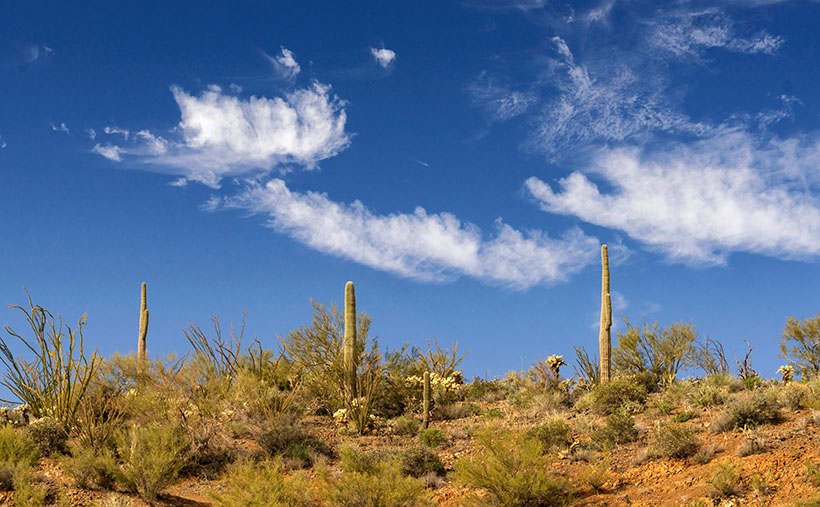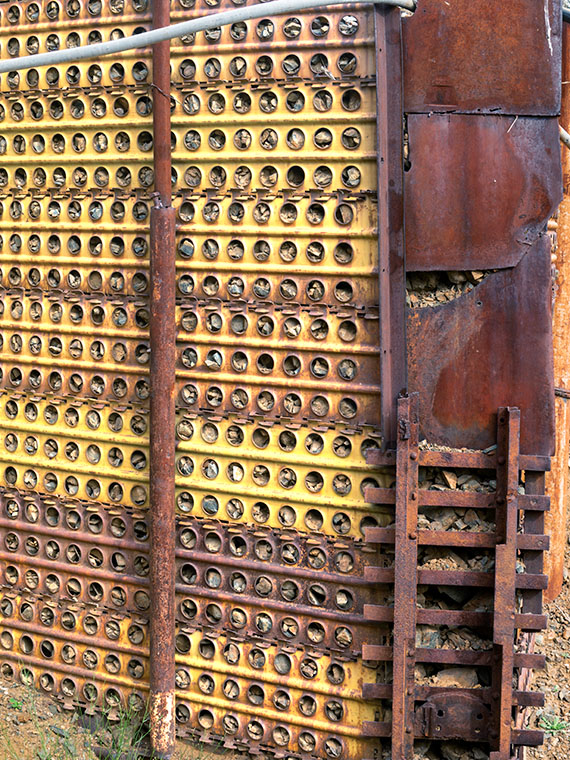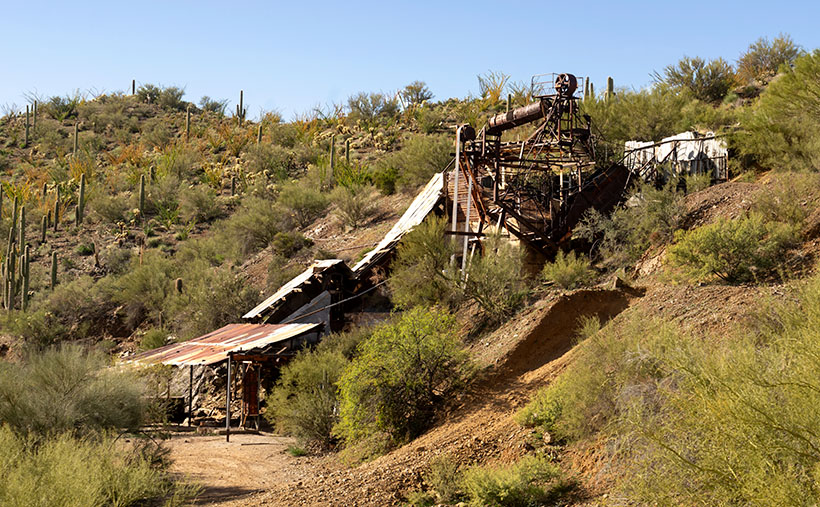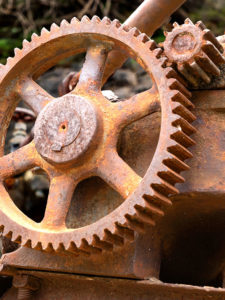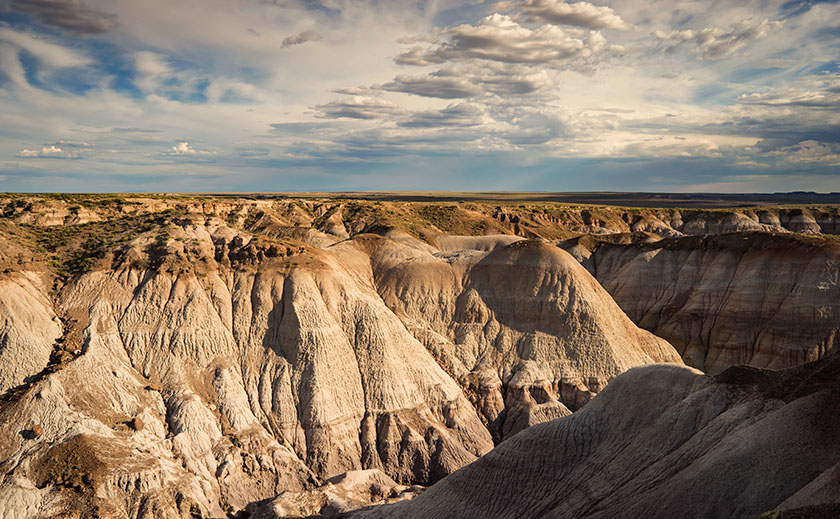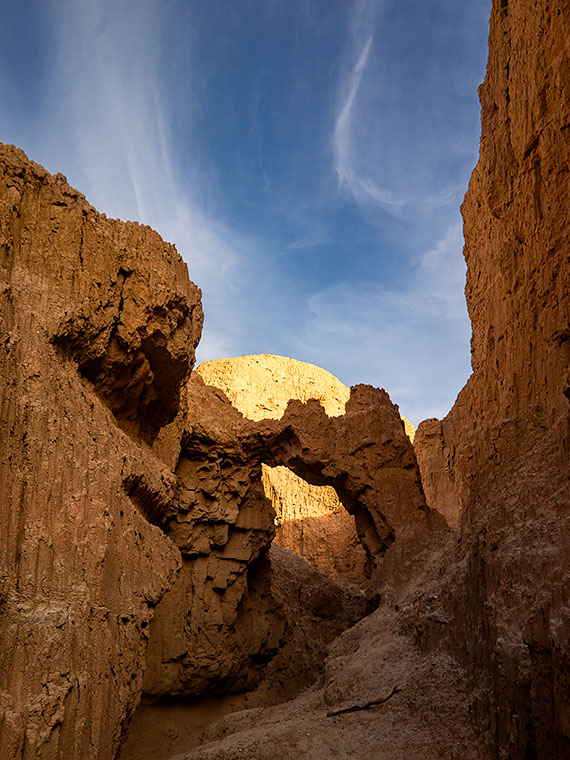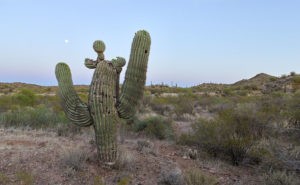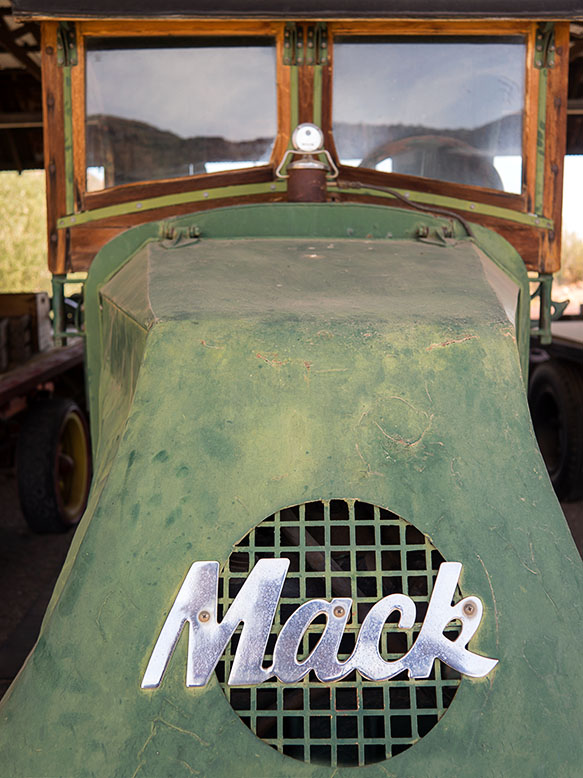Last week’s photo—Pair of Threes—was the final good image from the trip where I was Fred’s guest. Although I captured over 60 frames, most of them were variations, or they didn’t live up to my expectations. That happens a lot. But I wanted to share more of the natural beauty in the Wickenburg Mountains with you, so I packed the truck and returned for an afternoon last week. I didn’t make it back to the mine, but I found other lovely scenes to shoot in the area—besides, the sky was being very cooperative.
Sunday didn’t start out all that great, but as the day went on, the gray sky started to break up, so late in the afternoon, I headed back to the San Domingo Wash area. If you’re a regular reader, you know that’s the time of day that I prefer to work. After spending an hour in the field, the light was getting very low, so I started to make my way home because I wasn’t all that keen about getting stuck in some quicksand after dark.
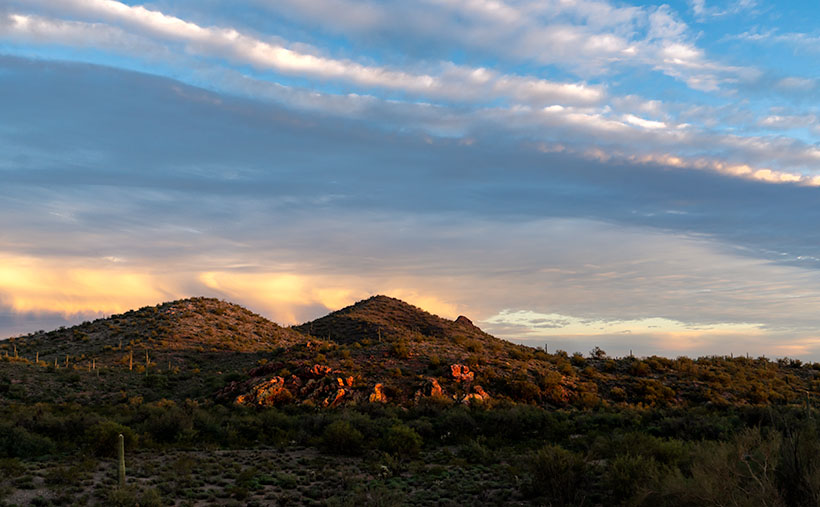
It was then that I shot this week’s featured image—Red Rocks and Twin Peaks—just as the sun was on the horizon below the cloud line. As I drove, I noticed the rock outcrop glowing red in the setting sun, so I looked for a place where the composition would work. I’m pleased with how there’s enough light to add texture to the desert without adding clutter, but I’m jazzed about the range of color in the sky. After I took this shot, the sun went below the horizon, and I thought, “It couldn’t get any better.” I headed home.
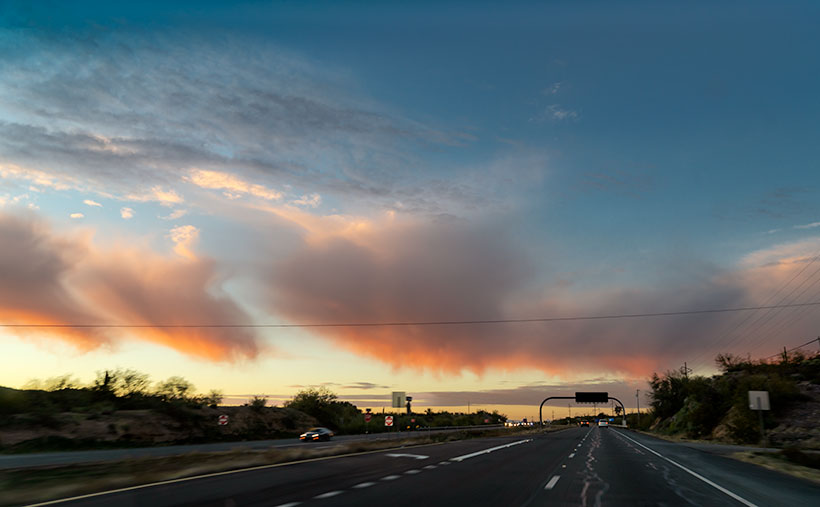
Imagine all of the internal screaming I did when a line of small clouds started showing pink virga as I was driving west on US 60. I’ve only witnessed this phenomenon a couple of times, and it never happens when I’m ready to capture it with a suitable foreground. In frustration, I jammed the camera to the windshield and fired a couple of blind shots while I was driving. Mother Nature can be very helpful to a photographer, but she doesn’t always play fair.
You can see a larger version of Red Rocks and Twin Peaks on its Web Page by clicking here. I hope you enjoy viewing this week’s post and come back next week when we’ll show another featured image from the Wickenburg Mountains.
Until next time — jw
P.S.: Queen Anne and I would like to send our best wishes to you. We hope your holidays are safe, warm and happy.

